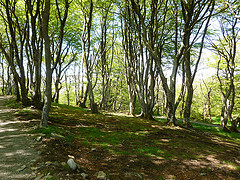Just a commentary after the event on the recent saga surrounding the axing of flights in and out of Benbecula.
Comhairle nan Eilean Siar decided to axe flights between Benbecula
and Barra, saving £148,000. This has had certain consequences, and in my
opinion not all of them were foreseen by our local authority. Although
the flights were poorly subscribed, they fulfilled a lifeline function.
Transporting urgent medical supplies, and patients back and forth to the
Uist & Barra hospital is but one that came to mind. Yes, there is
the ferry from Eriskay to Barra, but I can’t imagine that many recently
discharged patients from the U&B relish the prospect of a
potentially bumpy 40 minutes on the high seas.
However, I really do wonder if CNES foresaw the logistical
consequences - I doubt it. Withdrawing the Barra flights from Benbecula
also resulted in a reduction in flights from Benbecula to Stornoway (to
just 3 days a week) as well as in flights from Stornoway to Inverness
and Edinburgh. I found it wryly comical when our MSP started to squawk
at the prospect of his Friday flight from Edinburgh being axed so he
couldn’t go home for the weekend. Cutting the Benbecula - Stornoway
flights means that consultants coming from Stornoway can only do so on
Tuesday, Wednesday and Thursday, unless they are prepared to drive 75
miles (in total) and sit on a ferry for a whole hour to get themselves
to the U&B in Balivanich, Benbecula. And do the process in reverse
at the end of the day.
I am not convinced that CNES consulted with Loganair prior to
implementing the decision to cut the flights. Reading the media reports
at the time, everybody seems to have been caught out by the
consequences. Another consequence is the loss of a subsidy from the
Scottish Government for this lifeline service.
Cutting costs, which CNES has had to do to the tune of £6m, is a
necessary evil in this time of economic stagnation. But cutting costs
without due regard for the consequences is not good local government.




